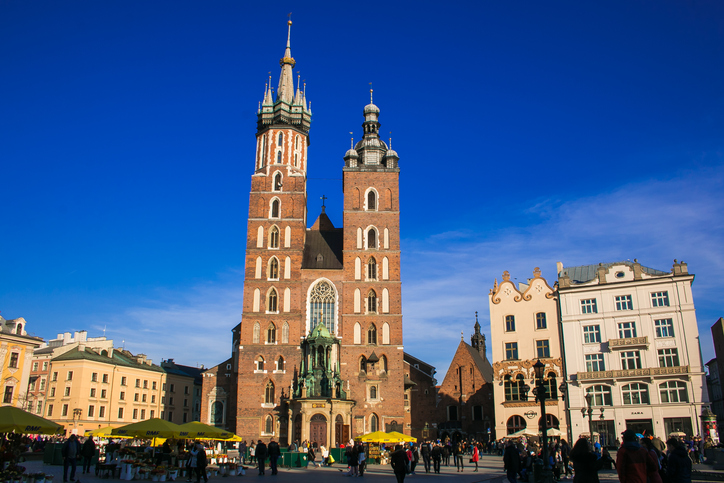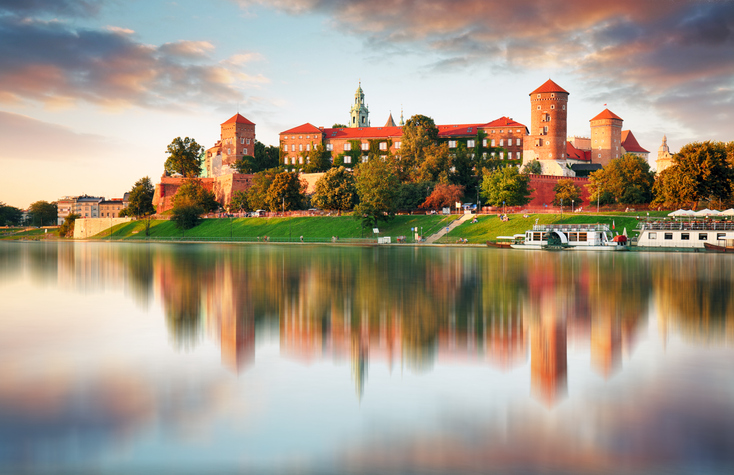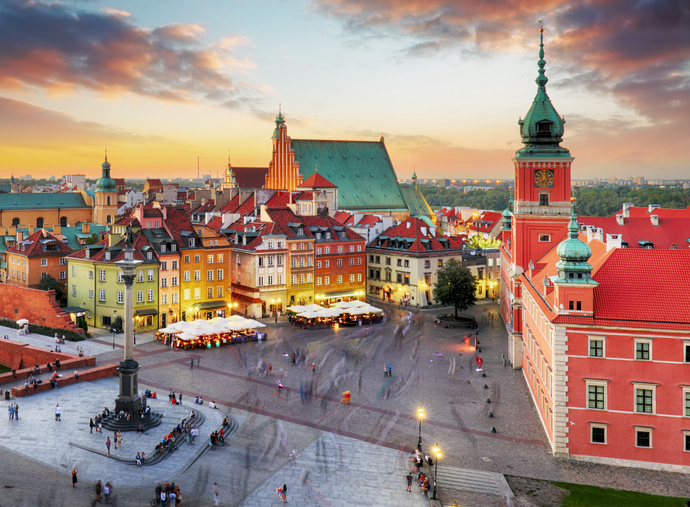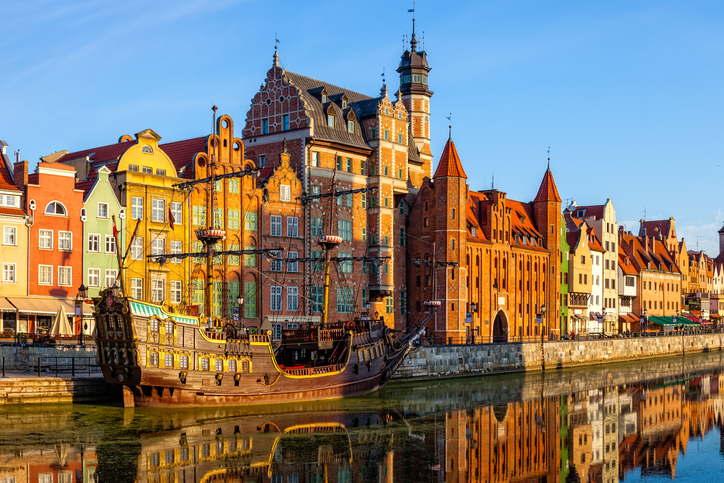We’ve all dreamt of travelling to a particular place, whether a country or a city. Our desire to go there might be rooted in a personal experience, watching a television series or reading a history book. One such country with a rich history waiting to be explored is Poland: a country which suffered terrible bloodshed during the Second World War, which today – according to Lonely Planet – is one of the best destinations to visit in 2019.
Let’s find out why.
Let’s begin with the jewel in the crown, Krakow:
Krakow is the former capital of Poland, with the city being built predominantly from stone. It was declared a UNESCO World Heritage Site in 1997 and is currently one of the country’s most popular tourist destinations. In the heart of the city you will find the Rynek Glowny: a huge square filled with life and populated by various buskers, surrounded by historic townhouses that were built in the 13th and 14th century which were subsequently rebuilt in the 14th and 15th centuries.
The Jewish Quarter, just a short walk from the city centre, was completely destroyed during the Nazi occupation, before being definitively restored in the 1990s. You must find the time to visit some of its synagogues (the oldest one in Poland can be found here) and eat in one of its many restaurants serving authentic Polish food.
By climbing Wawel Hill at one end of the old town, you will find the Wawel Royal Castle and Cathedral, the latter of which houses a chapel, crypts of historical figures and the Royal Sigismund Bell, which was constructed in 1520 and weighs 12 tonnes.
For centuries, the walled city was entered via St. Florian’s Gate. This point marked the start of the Royal Route, which was walked by former kings before their coronation in Wawel Castle.

After passing through the gate, you’ll find a circular fortification that once formed part of the city’s defences, known as the Barbican. This area is full of local artists, exhibiting their art along the length of the wall.

This wall impeded the growth of the city, so all but St. Florian’s Gate was knocked down as the city expanded. A park was left to grow freely in its place, which now circles the old town.
Not far from the Jewish Quarter is the Podgorze district: the former ghetto into which thousands of Jews were forced by the Nazis. This district is home to the Bohaterów Getta (Ghetto Heroes) Square, in which German forces made the decision on which people were to be sent to the nearby Auschwitz concentration camp. Schindler’s factory, known worldwide due to Steven Spielberg’s film, is also found nearby.
Having seen the sights in the city centre, you must also find the time to visit the Auschwitz concentration camp. It is often said that a group of people who aren’t aware of their history are bound to repeat it, making this camp a must-see. One million people – the majority of which, were Jews – were murdered there by Nazi forces.

Warsaw, the capital
Poland’s capital city has reinvented itself several times over, which is noted through the mix of architectural styles that become evident by walking around its streets. Gothic, Soviet and modernist architecture can be found across this city, which was deeply affected by the Second World War.
It was King Sigismund III Vasa who, in the 16th century, decided to make Warsaw the capital city of Poland, as he was able to control a greater area of the country from this location.
You can start by taking a stroll around the Old Town, no more than the historic centre, which was completely rebuilt after the Second World War. Building works subsequently returned the area, as much as possible, to its former glory. In the heart of the old town is Castle Square and Saint John’s Archcathedral, which was originally built in 1390.

Further north lies the historic district of the New Town, which is separated by the remains of Warsaw’s Barbican, where you will find the statue of Marie Curie.
One of the most worthwhile visits is the Royal Castle, which served as a royal residence between the 16th and 18th century and was rebuilt following the war. Today, it is a historical monument that is open to the public. Besides the castle, you will find Sigismund’s Column, which was erected in honour of this king.
Lazienki Park is one of the city’s green areas, reflecting the beauty of the more imperial Warsaw. Among multiple animals, fountains and mansions is the Lazienki Palace, surrounded by a lake that bears a monument to composer Frédéric Chopin.
Warsaw also presents an unmissable opportunity to learn about the history of the Nazi occupation. One such place is the Warsaw Uprising Museum, which tells the tale of the city’s uprising against Nazi forces.
Just like Krakow, the capital city also had a Jewish ghetto – the largest in Europe – in which 400,000 people died, although most of the ghetto was levelled during the Warsaw uprising. However, you are still able to visit the Monument to the Ghetto Heroes, the Jewish cemeteries and the POLIN Museum of the History of Polish Jews.
Other places of interest:
Gdansk:
Gdansk is one of the wealthiest and most beautiful cities in Europe. It is considered as the world capital of amber, with its narrow-building architecture and cobbled streets waiting for you to get lost among them and discover the city’s history.
Starting at the Royal Route’s High Gate – an emblem of the former Free City of Danzig (now Gdansk) prior to Nazi invasion – start walking down Dluga street, which stretches from the city centre to the pier. This is a great spot to admire the Gdansk City Hall, close to which you will find Neptune’s fountain. At the end of the street is the Green Door from which you access the river promenade.
Sandomierz:
This is one of the most historically significant towns in the countries. Its old town – which holds a castle, cathedral and city hall – sits atop a beautiful hill that is surrounded by a small forest, making it one of Poland’s most popular tourist destinations.
The list of small charming towns is almost endless, so you can’t go wrong. Other examples include Paczków, Kazimierz Dolny and Zalipie.







